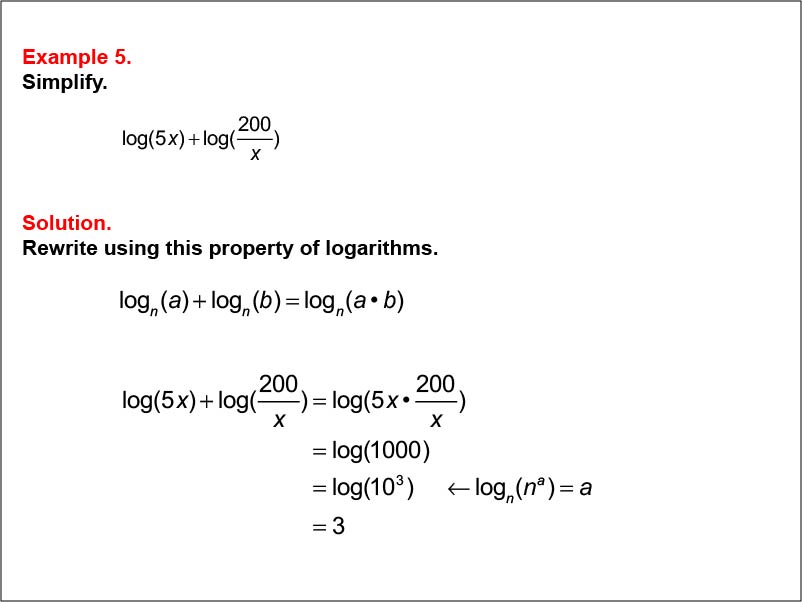
Display Title
Math Example: Laws of Logarithms: Example 05
Display Title
Math Example: Laws of Logarithms: Example 05

Topic
Logarithms
Description
This example demonstrates the simplification of a logarithmic expression using the product property. The problem involves simplifying log(5x) + log(200/x). By applying the property that the sum of logarithms equals the logarithm of the product of their arguments, we get log(5x * 200/x). This simplifies to log(1000), which is equivalent to log(103), resulting in 3.
The Laws of Logarithms are fundamental in simplifying complex logarithmic expressions. These examples help students understand how to apply these laws in various scenarios, including those involving variables and constants. By working through different problems, students can recognize patterns and develop strategies for tackling similar questions in the future.
Exposure to multiple worked-out examples is crucial for students to fully grasp logarithmic concepts. Each example presents a unique scenario, allowing students to see how the laws of logarithms can be applied in different contexts. This repetition reinforces understanding and builds confidence in problem-solving skills, especially when dealing with expressions that combine variables and constants.
Teacher's Script: Let's analyze this example step by step. Notice how the variable x cancels out when we multiply the arguments inside the logarithm. This is a common occurrence in logarithmic simplification. Can you think of other mathematical concepts where similar cancellations occur?
For a complete collection of math examples related to Logarithms click on this link: Math Examples: Laws of Logarithms Collection.
| Common Core Standards | CCSS.MATH.CONTENT.HSF.BF.B.5 |
|---|---|
| Grade Range | 9 - 12 |
| Curriculum Nodes |
Algebra • Exponential and Logarithmic Functions • Laws of Logarithms |
| Copyright Year | 2013 |
| Keywords | logarithms, laws of logarithms |